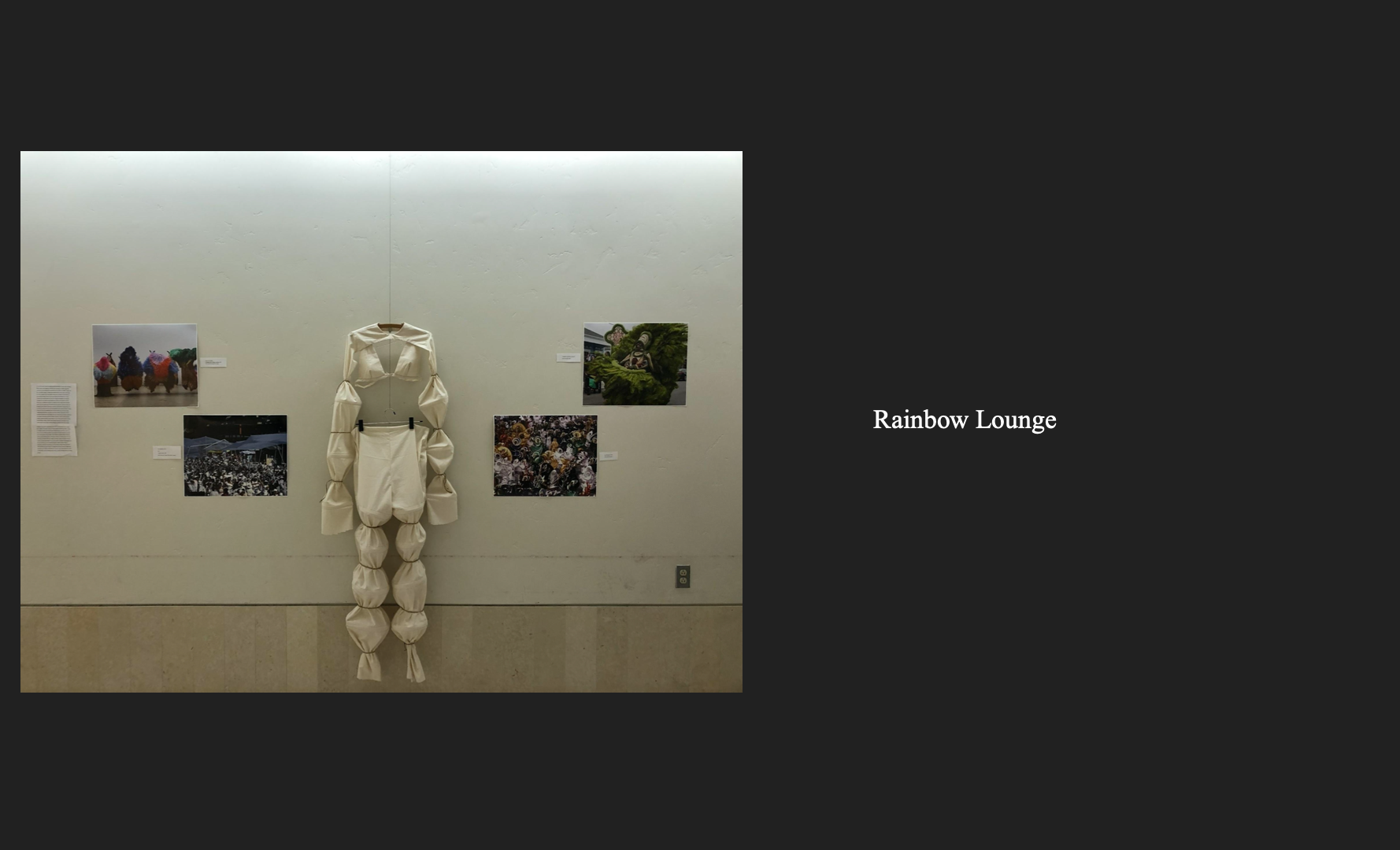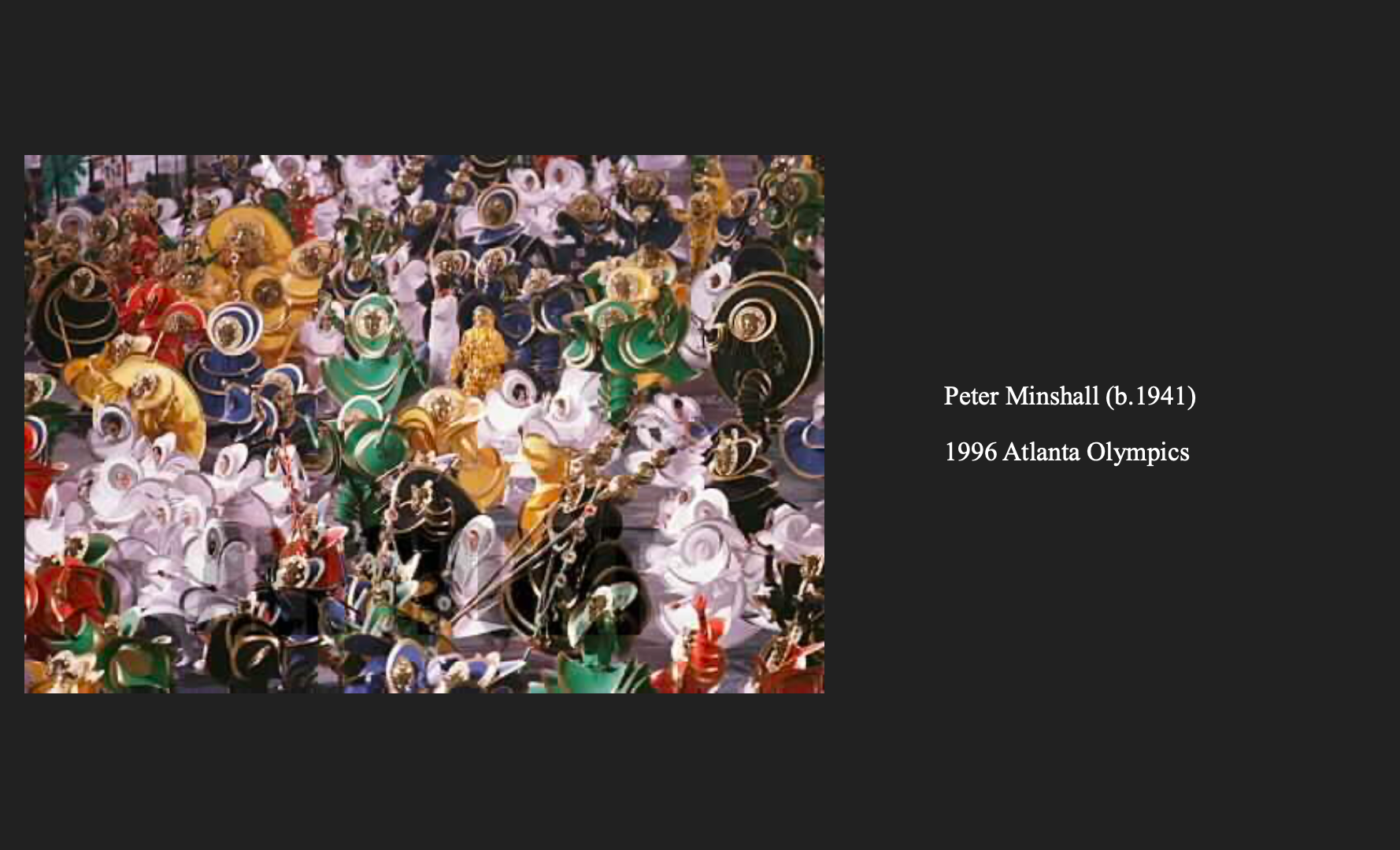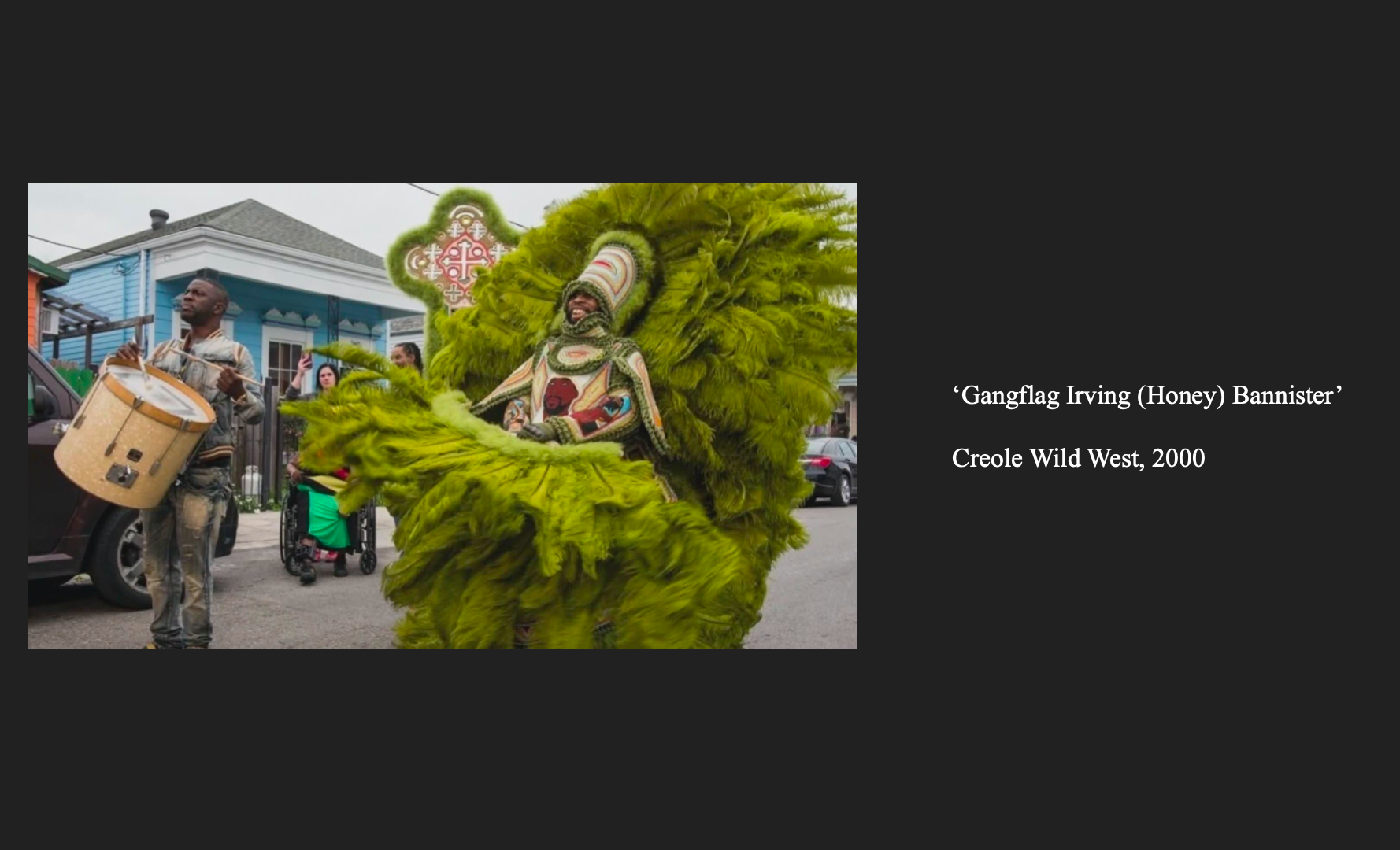Click each image below for more information!

For my senior project I curated an exhibit and designed a fashion piece around the intersections of costume, play, and healing. When we play we allow ourselves to fully be present and belong to something bigger. For so long marginalized communities have been stifled in our ability to imagine and play. In the rainbow lounge I combined artists together that hold values of play and healing in their work. In addition to this I created a piece in response. The artists that I’ve chosen are Peter Minshall, Nick Cave, and Tootie Montana.

Peter Minshall was a popular Trindadian Mas costume designer in the early 80s. Though Peter Minshall is not ethnically Trinidadian, his work spoke to me and inspired me to reclaim my own position in African diasporic arts. The silhouette of my piece was inspired by the disc shape that Peter Minshall heavily uses in his costume work. Trinidadian Mas is also inherently community oriented, and through this piece I wanted to explore how community is built through costume and play.

The next artist I've chosen is Nick Cave who started designing his pieces after the beating of Rodney King in 1991. Nick Cave detailed that shortly after this horrific event, he felt increasingly marginalized and discarded as a gay Black man living in America. This led him to choose materials that reflected those same feelings in his work. Along with using discarded materials, he also created costumes that concealed the identity of the body, in order to connect everyone's humanity. Despite his efforts to conceal identity as a way to bring out the humanity in people, I find that offering visibility of identity creates stronger connections. He ultimately used his costume work as a way to cope. The idea for my fashion piece blossomed in 2020 when I needed something to cope with the world flipping upside down. Costume making in this way became a form of catharsis.

The last artist I chose was Tootie Montana of the Mardi Gras Indians, who takes the Caribbean tradition of bands and indigenous dress silhouettes to participate in Mardi Gras. They are named the Mardi Gras Indians to pay homage to the support Indigenuos communities gave to freeing enslaved African peoples. These costumes are typically created by Black men and the way that a band becomes the most popular is based on how pretty they are. This shows the defiance and freedom within play. Women are typically confined into doing the sewing for costumes, but in this tradition Black men, who are typically not allowed to express themselves in this way, do the sewing and are rewarded for being the prettiest. This form of play is transgressive, and I hope in reclaiming my own idea of play as a Black woman, I am able to break individual and societal barriers. All of these practices touch at the heart of catharsis and transgression and I wanted to reflect that in my own work. I want to offer anybody who comes into this exhibit a chance to reclaim their idea of play, and utilize it throughout their own healing journeys.
My senior project is in the form of a curated exhibition. The theme of the piece is the importance of play in the healing process. I combined artists together that hold similar values in their work, as well as created my own fashion piece in response. I want to offer anybody who comes into this exhibit the opportunity to remember what their idea of play is, and utilize it throughout their healing journeys.
BIO
My name is Nyah Ginwright and I am from Oakland, California. I am a World Arts and Cultures major and after college I will be working at an arts organization in Los Angeles.